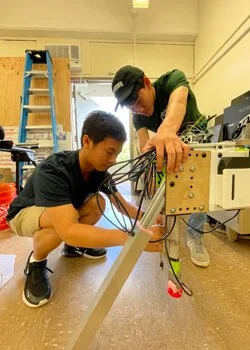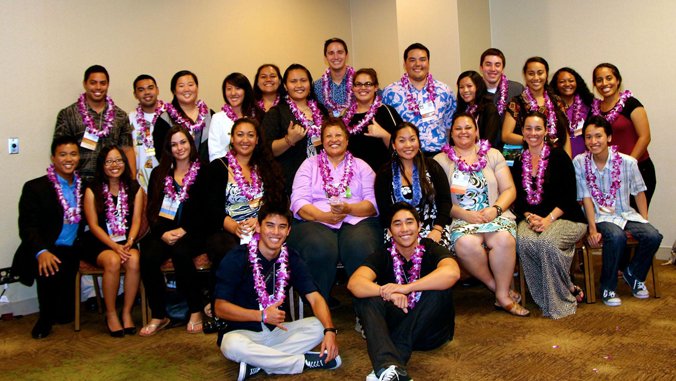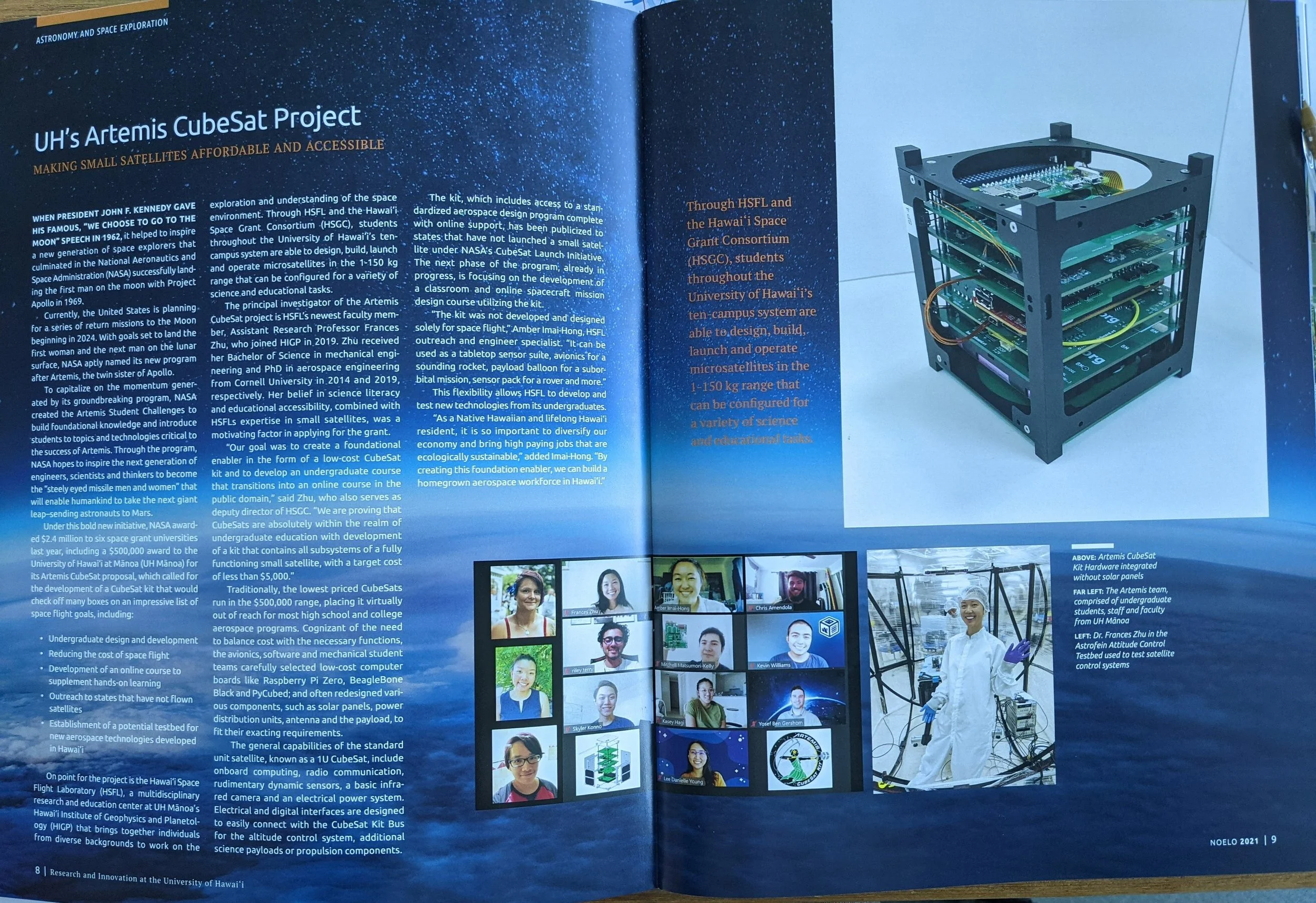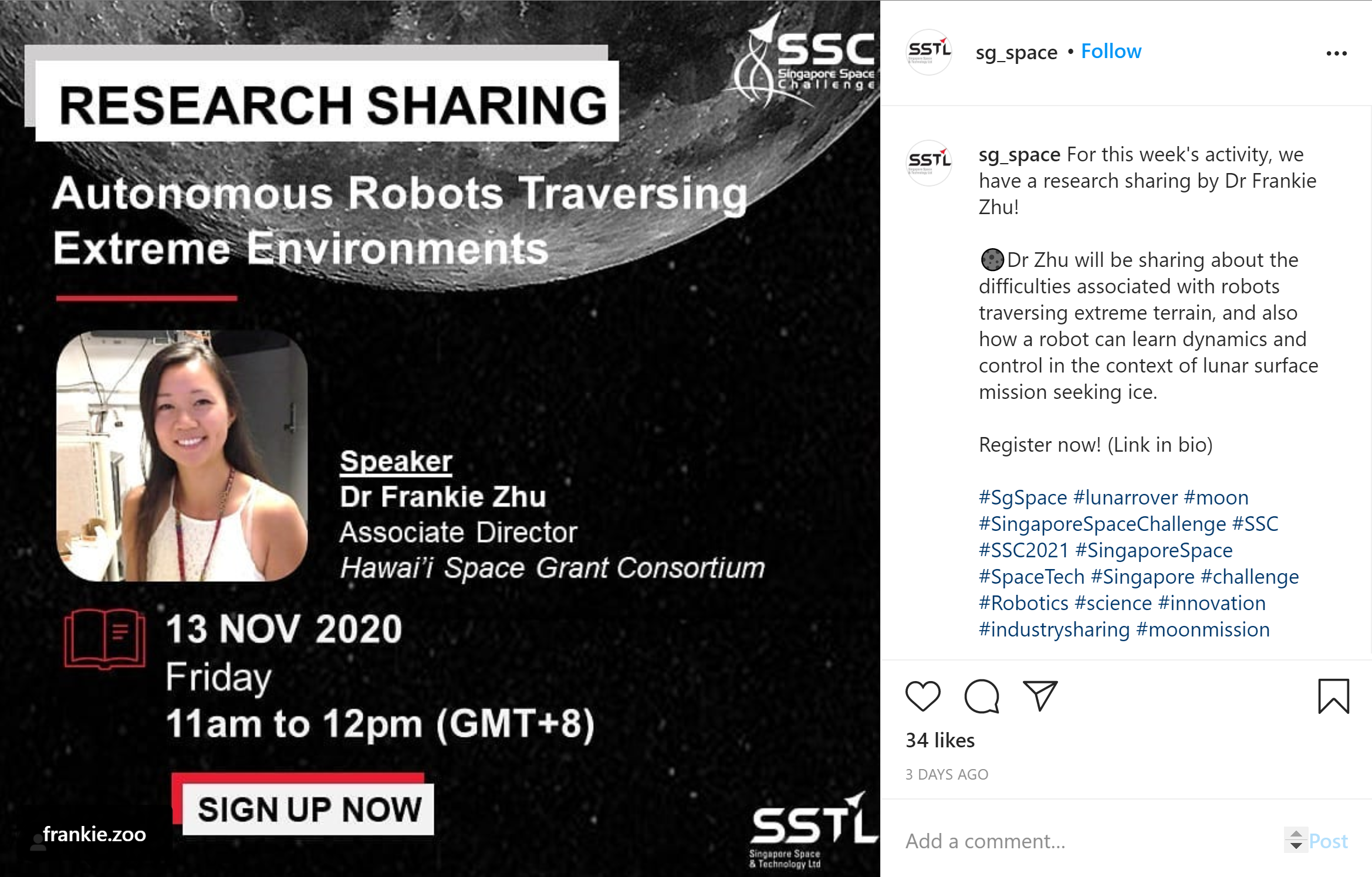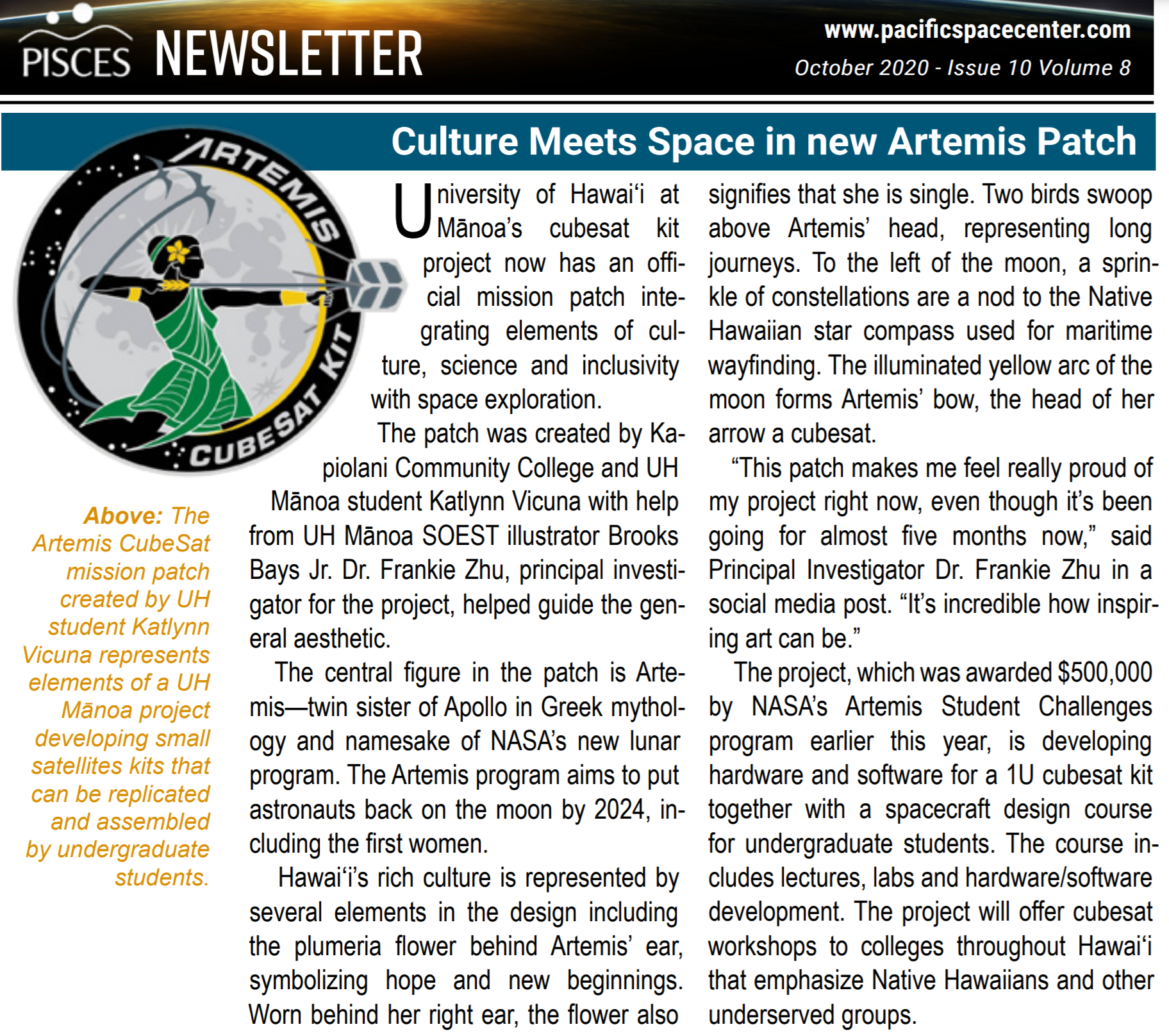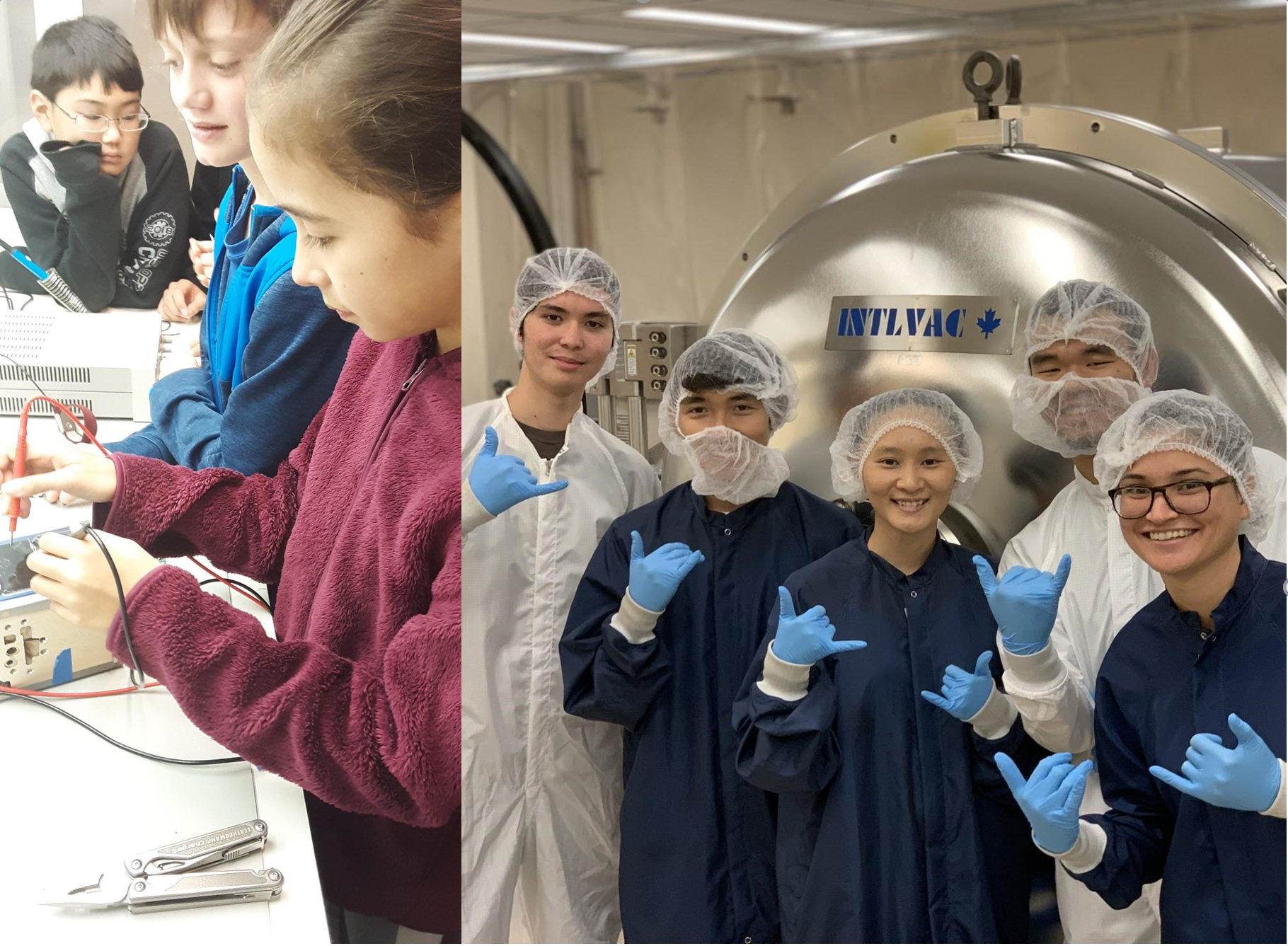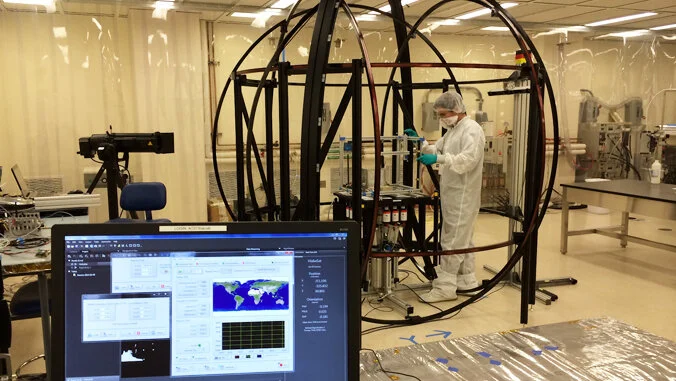News
Mars or Bust! UH Students' Robot Design Heads to International Showdown
April 14, 2024
Frankie Zhu, Hawaiʻi Institute of Geophysics and Planetology Assistant Researcher and the team’s advisor plus, Micah Chang, UH Mānoa team project manager were on Good MorningHawaii to talk about the team Robotic Space Exploration. Team RoSE is headed to Utah in late May to compete in the University Rover Challenge—the world’s premier robotics competition for college students.
Ryan Wong working at the Robotic Space Exploration Lab.
Cubesats, Robotics, 3D Printing: Hands-on STEM Experience for HS Students
July 14, 2023
From space exploration using robotics to creating 3D printed wearable devices, 16 high school students from Oʻahu experienced a hands-on learning opportunity in the field of engineering through the University of Hawaiʻi at Mānoa College of Engineering’s Junior Engineers Summer STEM Experience (JESSE) program.
HITIDE cohort 2 members with other UH faculty and staff.
Space Exploration, AI Engineering among Selected UH Startups
February 28, 2023
Mahina Aerospace includes a team from HSFL: Avionics Engineer and Program Manager Amber Imai-Hong; Assistant Researcher Frankie Zhu; Software Engineer Luke Clements; and Systems Integrator Chris Amendola. Their technology is a low-cost spaceflight-ready, educational, small 1U cube satellite. Paired with a collection of STEM curricula, the Artemis CubeSat has the potential to significantly advance aerospace education and provides a low-cost
Hawaii Space Flight Laboratory researchers and staff shared their eff orts to integrate students into their NASA-funded research from kindergarten to college.
SOEST joined showcase of research excellence at the State Capitol
February 28, 2023
“Research Day at the capitol was a great opportunity to talk with our local Representatives, Senators, and their staffers about the work we do at HIGP,” said Amber Imai-Hong, Avionics Engineer with the Hawai‘iSpace Flight Laboratory in the Hawai‘i Institute of Geophysics andPlanetology (HIGP). “It was interesting to hear their concerns as well as to see the interest they have in the outreach and research we are doing.”
The Earth rose over the curve of the moon, creating an "Earth rise." NASA video screenshot by Amanda Kooser/CNET
UH Develops Technology for Future Artemis Missions to Moon, Mars
November 15, 2022
NASA ’s next launch attempt for the Artemis I mission is on November 16 at 1:04 a.m. EST (November 15, 8:04 p.m. HST ), and University of Hawaiʻi at Mānoa researchers have created new technology to assist the Artemis project.
A UH Incubator Aims to Take Ideas to Market
November 7, 2022
HITIDE helps faculty, staff and students commercialize their research and innovations. How about a $5,000 space satellite?
Healani Chang with her students from the ʻIlima SACNAS Chapter at the University of Hawaiʻi.
UH Mānoa Bolstering Underrepresented, Wāhine Faculty in STEM
October 3, 2022
With the aim of increasing the number of underrepresented, wāhine (women) faculty in the science, technology, engineering and math (STEM) fields, the University of Hawaiʻi at Mānoa began a new project funded by the National Science Foundation (NSF) for more than $300,000.
Motion Capture is Guiding the Next Generation of Extraterrestrial Robots
January 25, 2022
“How do we build robots that can optimally explore space?” is the core question behind Dr Frances Zhu’s research at the University of Hawai’i. One part of the answer is, “with motion capture”.
University of Hawaii is Hiring Aerospace Engineering Assistant, Associate, and Full Professors
December 3, 2021
Please come work with me at the University of Hawaii as an assistant professor or as an associate/full professor in aerospace engineering! https://secure.neogov.com/aurora/job/38f535feb9b85992df49d146b774357f https://secure.neogov.com/aurora/job/38f535feb9b85992069d211c9fa3dcfa
UH Research and Innovation Noelo Magazine Feature
September 15, 2021
From Aerospace to Agriculture, Grants to UH Programs for COVID Responses
August 10, 2021
Hawaiʻi Space Flight Laboratory in the UH Mānoa School of Ocean and Earth Science and Technology received $449,725 for its Project: “CubeSat” design challenge, an open-ended design challenge for students based on space exploration and science.
Chris Amendola, UH Alum and systems engineer for the Artemis project, holding an as-built Artemis CubeSat Kit
Revamped Aerospace Engineering Program Launches Student Opportunities
April 30, 2021
“Students at UH have consistently expressed interest in aerospace engineering. Three vertically integrated projects center around aerospace topics and these groups sum to over 50 students at any one time,” Zhu said. “UH has also listed space systems as a priority in its reorganization and strategic plan. The state of Hawaiʻi, and UH as the main higher education institution, needs to support the training of highly technical graduates. The field of robotics will be a mainstay for UH, Hawaiʻi and future space missions. Creating an atmosphere in which future students can learn and work on aerospace engineering projects increases the interest and participation in the field.”
Singapore Space and Technology Ltd Seminar
November 27, 2020
PISCES October Newsletter Featuring the Artemis CubeSat Kit Patch
October 2, 2020
Basic structure of a nanosatellite (CubeSat), Credit: Alén Space
Exploring Space From Your Basement? How Nanosatellites Will Change Space Research
August 11, 2020
The fabulous Aliya Kpamegan, a high school student participating in an MIT summer program, interviewed me for her article on small satellites. A little excerpt:
“CubeSats launched in a network like “having a really big shark or a school of fish”, says Dr. Frances Zhu, an Assistant Research Professor at the Hawai’i Institute of Geophysics and Planetology, are “much more capable than some really large satellites back in the day, for example, like the Apollo Command modules”. Dr. Zhu and her undergraduate students are currently developing CubeSat kits which will be accessible to anyone who can purchase and build one. Projects similar to Dr. Zhu’s will allow research in space to become more widespread and available to more scientists.”
Demonstrating Spacecraft Technology in Zero-Gravity
June 16, 2020
I wrote a short memory of my experience in parabolic flights for the PISCES Newsletter:
“During my PhD, I had the pleasure of flying in two microgravity flight campaigns to demonstrate a spacecraft docking mechanism consisting of magnets and superconductors. I had been developing this technology (called a flux-pinned interface) for three years together with my team at Cornell University, the Space Systems Design Studio led by Dr. Mason Peck, and at NASA’s Jet Propulsion Laboratory, led by Dr. Laura Jones-Wilson. Both flight campaigns were made possible through Zero-G, a commercial microgravity flight provider.”
UH awarded $500K to develop small-satellite educational kits
May 18, 2020
In a bold new initiative to inspire the next generation, NASA has awarded $2.4 million to six universities, including the University of Hawaiʻi at Mānoa, as part of its Artemis Student Challenges. UH Mānoa received $500,000 to create to create an affordable 1U CubeSat kit, which will help develop a robust aerospace program starting at the undergraduate level, including hardware, software and an online lab course.
NASA Funds Artemis Student Challenges to Inspire Space Exploration
May 7, 2020
University of Hawaii, Honolulu – $500,000: The university will generate hands-on learning opportunities related to orbital and suborbital CubeSats containing all of the subsystems of a fully functioning passive satellite. Each CubeSat will include onboard computing, communication components, dynamic sensors, an infrared camera and an electrical power system. The hands-on learning opportunities will be supplemented with online learning resources. The grant will also be used to assist CubeSat projects from states that are not yet part of NASA’s CubeSat Launch Initiative. This team will include undergraduate students from the University of Hawaii in Honolulu. A broad network of students from Hawaii and Washington will be included in performing the initial evaluation of the learning products.
Essential satellite research, development continues in ‘clean room’
April 7, 2020
…Research at the Hawaiʻi Institute of Geophysics and Planetology (HIGP) has continued via online conferencing, and going into the lab only for essential work in a safe space known as the “clean room”. Researchers developing two satellites continue their work with the hope of sticking to Neutron-1’s original satellite launch schedule of September 2020.
Future Digital Leaders Workshop
November 25, 2019
The Future DigiLeaders career workshop at KTH gathered 45 young, international female researchers interested in digitalisation technologies.
Microgravity Flights
June 5, 2018
Parabolic Flights Advance Space Technologies for Gesture Control, Propellant Gauging, and Mars Sample Return Capabilities
NASA Space Technology Research Fellowship
July 7, 2015
Close Proximity Robotic Maneuvering through Flux Pinning Manipulation
Non-contacting actuation technology like flux pinning has never been demonstrated in space. The development of a nonphysical joint is critical for maneuvers such as docking, rendezvous, and in-orbit assembly (NASA Technology Area 4: robotics, tele-robotics and autonomous systems).
Flux pinning is not well characterized for interactions that involve all six rigid-body degree of freedoms. My research will focus on developing a better mathematical model and constructing a spaceflight system to demonstrate prolonged flux pinning interactions.
I will develop this model to show that flux pinning is robust enough to overcome environmental torques and magnetic field disturbances, given well simulated, tested, and robust control algorithms and system architectures (TRL, Technology Readiness Level 4). I will then construct a test environment to iteratively validate the theoretical model and demonstrate dynamic manipulation (TRL 5-6). To prove that this will be feasible in space missions, I will develop fully integrated CubeSats to perform maneuvers on these testbeds (TRL 7).
Other Media
My footprint on the internet goes way back, all the way to when I was 8! Scroll down to see articles.
Space Camp
Engineering their future: KU camp works to attract girls to science field
ABACUS Math Competition
This year she is a Grade 5 student of the Job Lane School in Bedford, Massachusetts, USA.
In 2001-2002, as a Grade 4 student of the Peabody School, Cambridge, Massachusetts, USA, she finished in Second Place in the 3rd-4th grade age-group.
Science Sleuths
At ExperiMentors, kids learn real science while having fun
